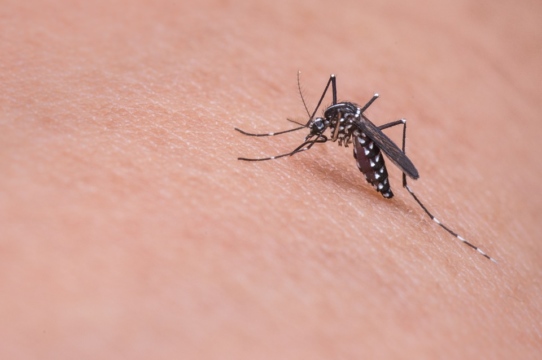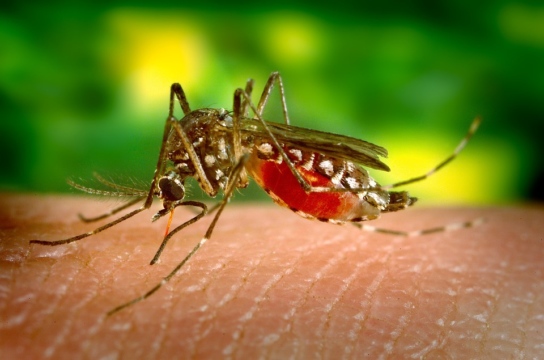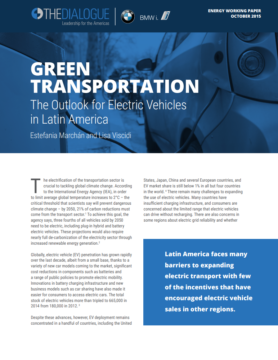
Green Transportation: Electric Vehicles in Latin America
Electric vehicles are a critical part of a clean transport agenda, but strong policy incentives are needed to promote widespread EV adoption in Latin America.
A Daily Publication of The Dialogue
Approximately 39 percent of the population of Latin American and the Caribbean has been vaccinated against Covid-19, the director of the Pan American Health Organization (PAHO) said Oct. 12. Countries including Chile and Uruguay have vaccinated more than 70 percent of their respective populations. However, Guatemala, Venezuela and Honduras—along with at least seven other countries—have fully vaccinated less than 25 percent. Why are so many countries lagging behind the regional average? What does the disparity in vaccination rates mean for the region’s efforts to stop the spread of Covid-19? How is this affecting commercial and tourist relations between countries that have starkly different vaccination rates?
Erika Mouynes, Panama’s minister of foreign affairs: “Vaccine inequality threatens to amplify the effects of the pandemic. If wealthy countries continue to buy disproportionate amounts of vaccines, up to seven or 10 times the needs of their populations until 2023, regions such as Latin America and the Caribbean—the hardest hit from the pandemic, with more casualties per capita than any other region—will not be able to recover. For countries left entirely dependent on donations to immunize their citizens, the future will be dark for years to come. We are approaching a very dangerous tipping point. There are purchase agreements that leave middle- and low-income countries with few options to timely access vaccines against the new virus. They have been left alone to their own diplomatic devices and wealthy countries’ welfare. Some countries have signed deals with the main vaccine suppliers that guarantee as many as eight doses per person. These are doses we all need; there is limited manufacturing capacity and limited supplies. No more vaccines will be available in the short term. If each country only buys what it needs for its population, our region could have the vaccines it needs, when it needs them. As the region hardest hit by the pandemic, Latin America must demand a seat at the table. If we don’t speak out with one voice, if we don’t call for these agreements to be reconsidered, we won’t get a fair and equitable vaccine redistribution for all regions in the world. It’s a matter of ethics. It’s a matter of humanity.”
Katherine Bliss, senior fellow in the Global Health Policy Center at the Center for Strategic and International Studies and adjunct professor at Georgetown University: “Some countries, such as Chile, have achieved high levels of Covid-19 vaccine coverage because they secured early bilateral deals with multiple vaccine manufacturers. Others, such as Cuba, have developed, produced and distributed their own vaccines. However, many countries in the region have been unable to access supplies sufficient to immunize a high percentage of their eligible populations. Covax, the global effort promoting equitable Covid-19 vaccine access, has delivered fewer doses than originally promised for 2021, in part because of export controls imposed earlier this year by India, where the majority of the Covax-distributed vaccines are manufactured. Countries, including Argentina, that contracted with Russia’s Gamaleya Institute to purchase the multidose Sputnik V vaccine have faced challenges in distributing the second shots because of production delays. The World Bank and the Inter-American Development Bank have provided countries with funds to purchase vaccines, but the largely middle-income countries in the region haven’t been able to compete with upper-income countries that are able to pay higher prices. Some countries are receiving vaccines donated by those with surplus supplies, including the United States, the Dominican Republic and Spain, but these numbers are small compared to the overall need. To improve regional access, PAHO has begun negotiating vaccine purchases for member countries and has also identified sites in Argentina and Brazil to serve as regional mRNA vaccine production hubs. But without higher levels of vaccine coverage, SARS-CoV-2 will continue to spread, unraveling decades of health improvements and exacting an ongoing toll on regional security and economic activity.”
Alex Alarcón Hein, head of the global public health program at Universidad de Chile and executive secretary of Alianza Latinoamericana de Salud Global: “The group of lagging countries is just one of the consequences of the insufficient international cooperation in the Americas— without cooperation in health, there are no egalitarian responses. This lack of cooperation is also the product of weak health diplomacy, from which it became clear that each country sought the best alternatives within its political and economic options. A kind of ‘negotiating individualism’ has been observed in countries with the highest vaccination coverage, such as Chile and Uruguay, as a result of previous trade agreements. Nevertheless, this also contributed to the fact that some nearby countries were favored with small-scale donations to assist some countries that experienced delayed vaccination plans. The significant difference in vaccination rates in the region is an indicator of this lack of cooperation and diplomacy, and it accentuates health inequalities in access and coverage. At the same time, there is a false security in the countries with the highest vaccine coverage, as they believe that just by being vaccinated, Covid-19 disappears—nothing is further from reality. These differences, which certainly must be analyzed in great depth and with robust evidence, influence the perception of security in trade and tourism relations, as restrictions are still in force and mobility is far from reaching its pre-pandemic level. Regional coordination and governance, which have not been visible to date, are necessary for the health crisis. A hopeful vision would be to have en bloc responses from the region’s states to return together to a post-pandemic era that moves away from the current social and economic crises caused by Covid-19.”
Núria Homedes, executive director of Salud y Fármacos: “Latin America and the Caribbean has 8.4 percent of the world’s population, and on Oct. 14 it registered almost 19 percent of the worldwide confirmed Covid-19 cases (45.4 million) and almost 35 percent of the deaths (1.5 million). Due to Covid-19, the region last year experienced a 7 percent economic contraction, reaching 15 percent in several tourism-dependent countries, and 22 million people became impoverished. Most governments responded swiftly and decisively with public health measures while eagerly waiting for an effective vaccine. The Latin American countries with financial means and technical capacity quickly engaged in bilateral agreements with vaccine producers, even before the WHO certified the vaccines for emergency use. The countries without purchasing power and/or the ability to negotiate reasonable contracts were left behind. There is no doubt that these large vaccine inequities represent a menace for the region: nobody is safe until everybody is safe, especially when economies are interdependent. This unsatisfactory response points to a broader multifactorial problem, including the lack of regional preparedness to respond to an epidemic; weak global and regional leadership in organizing global procurement, efficient and equitable distribution of vaccines, treatments and other supplies; weak health systems; the lack of solidarity of high-income countries that hoarded vaccines and opposed technology transfers and other strategies to increase the global production of Covid products, such as the WTO waiver; and excessive reliance on private pharmaceutical companies for the development and production of life-saving products. It is now obvious that these companies choose to satisfy the greed of a few over the lives and livelihoods of a large majority, even when receiving very large public subsidies.”
Arachu Castro, Samuel Z. Stone Chair of Public Health in Latin America at Tulane University: “The inequity behind the distribution of Covid-19 vaccines in Latin America and the Caribbean is largely explained by the type of participation in the Covax mechanism. As of Oct. 15, among the 10 countries that participate as donor-dependent countries—Bolivia, Dominica, El Salvador, Guyana, Grenada, Haiti, Honduras, Nicaragua, Saint Lucia, and Saint Vincent and the Grenadines—22 percent of the population is fully vaccinated. Coverage ranges from less than 1 percent in Haiti to 55 percent in El Salvador. However, among the self-financing participants in Covax—Antigua and Barbuda, Argentina, Bahamas, Barbados, Belize, Brazil, Chile, Colombia, Costa Rica, the Dominican Republic, Ecuador, Guatemala, Jamaica, Mexico, Panama, Paraguay, Peru, Saint Kitts and Nevis, Suriname, Trinidad and Tobago, Uruguay and Venezuela—43 percent of the population is fully vaccinated. Coverage ranges from 11 percent in Jamaica to 75 percent in Chile and Uruguay. Cuba, which did not participate in Covax and is the only country in the region that has developed its own vaccines, has fully vaccinated 69 percent of its population. The divide that this data reflects can undermine all efforts to bring the pandemic to an end in the entire region, where Covid-19 continues to have a devastating impact despite the deployment of vaccines.”
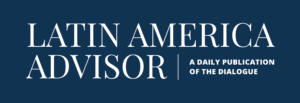 The Latin America Advisor features Q&A from leaders in politics, economics, and finance every business day. It is available to members of the Dialogue’s Corporate Program and others by subscription.
The Latin America Advisor features Q&A from leaders in politics, economics, and finance every business day. It is available to members of the Dialogue’s Corporate Program and others by subscription.
Electric vehicles are a critical part of a clean transport agenda, but strong policy incentives are needed to promote widespread EV adoption in Latin America.
In Brazil, the possibility of pregnant women with Zika having access to abortion has not entered the public debate.
Government agencies and international organizations race to find a solution given recent information about the link between Zika and neurological disorders.
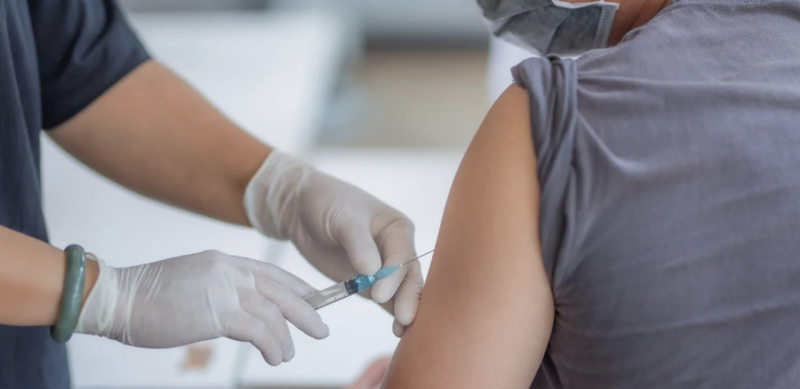 Latin America and Caribbean countries are seeing wide disparities in the percentage of people
vaccinated against Covid-19.
// File Photo: Pan American Health Organization.
Latin America and Caribbean countries are seeing wide disparities in the percentage of people
vaccinated against Covid-19.
// File Photo: Pan American Health Organization.
